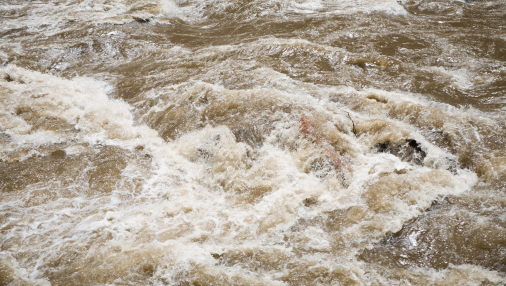Varanasi Floods: A City Caught Between Divinity and Despair
A City Submerged in Water—and History
Flooding in Varanasi is not new. Situated along the low-lying floodplains of the Ganga, the city has historically faced seasonal surges in water levels. But this year, the situation has reached alarming proportions. With incessant rains across eastern Uttar Pradesh and heavy water discharge from upstream barrages, the river breached danger marks in several locations.
The iconic ghats—usually filled with devotees, sadhus, and tourists—are now underwater. Boats float where people once walked. Assi, Dashashwamedh, and Manikarnika Ghats are submerged, leaving rituals and cremations to happen in makeshift elevated platforms or alternative spaces.
The Human Cost of a Sacred Overflow
While photos of flooded temples and boatmen navigating the submerged city paint a surreal picture, the ground reality is far grimmer. Thousands of residents, particularly those living in low-lying areas like Nagwa, Adampur, and Rajghat, have been displaced. Temporary relief camps have been set up, but overcrowding, lack of sanitation, and limited access to clean water remain major concerns.
Health risks loom large. Waterborne diseases like cholera, typhoid, and diarrhea surge in the aftermath of floods, with children and the elderly most at risk. The city’s ancient drainage systems, already under strain from urbanization, have been overwhelmed, compounding the crisis.
Climate Change and Urban Chaos
Experts point to a dangerous cocktail of factors behind the worsening flood scenario:
- Climate change is increasing the intensity and unpredictability of rainfall.
- Deforestation and siltation in the upper Ganga basin reduce the river’s capacity to absorb runoff.
- Unplanned urban growth along floodplains narrows the river’s natural path and blocks drainage channels.
Ironically, the very sanctity of the Ganga—which draws millions of pilgrims each year—has made Varanasi more vulnerable. As demand for real estate near the ghats increases, ecological concerns are often sidelined in favor of commercial interests.
Government Response: Too Little, Too Late?
The district administration has issued alerts and is coordinating rescue operations, but critics argue that flood preparedness has been reactive rather than proactive. The National Disaster Response Force (NDRF) and local authorities are active, but many say they lack the resources and planning necessary to cope with the scale of the crisis.
What’s more concerning is the lack of long-term flood mitigation strategies. Desilting the Ganga, restoring natural wetlands, and enforcing construction bans along flood-prone zones are steps that are discussed often but implemented rarely.
A Resilient Spirit Amid Rising Waters
Yet, as always, Varanasi shows remarkable resilience. Volunteers and local NGOs have stepped in with food packets, boats, and medical camps. Residents help each other navigate flooded lanes with makeshift rafts. Despite the crisis, the city’s spiritual pulse beats strong. Ganga Aarti continues—albeit from boats or higher platforms—reminding everyone of the deep-rooted connection between life, death, and the river.
Conclusion: Lessons for the Future
The Varanasi floods are not just a local tragedy—they are a wake-up call. As India urbanizes and climate challenges intensify, the country must rethink its relationship with rivers, cities, and nature. For Varanasi to thrive as both a spiritual center and a livable city, it needs infrastructure that respects ecology, policies that prioritize people, and planning that anticipates the future—not just responds to it.

